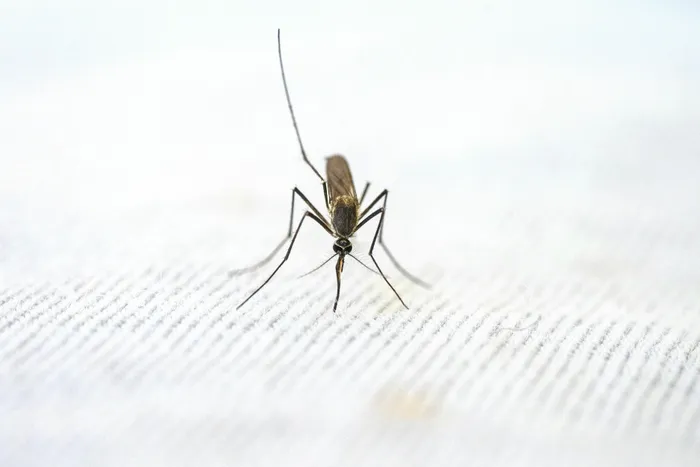Will climate change turn South Africa into a risky malaria zone?
Without reinvestment, we risk losing the fight against malaria as fragile health systems struggle to keep up with the growing demand for prevention

With the World Health Organisation reporting 95% of malaria deaths in Africa in 2023 and outbreaks emerging in non-endemic regions, the message is clear: we must reinvest, reimagine and reignite the fight. Increased domestic funding, innovative partnerships and full replenishment of the Global Fund are critical now more than ever.
Image: Supplied
Climate change is redrawing the malaria map, driving transmission into parts of Africa previously considered low-risk and threatening to undo decades of progress.
With rising temperatures, changing rainfall patterns, and extreme weather events creating ideal breeding conditions for mosquitoes, the threat is evolving and spreading.
Goodbye Malaria is calling for urgent increased investment, warning that environmental changes are fuelling a resurgence of malaria by expanding mosquito breeding grounds and straining the already limited resources available to fight the disease. Without reinvestment, we risk losing the fight against malaria as fragile health systems struggle to keep up with the growing demand for prevention, treatment, and control in an increasingly unpredictable climate.
“Great progress was initially made against malaria, with the global mortality rate halved between 2000 and 2015.. “Since then however, we’ve seen progressing plateauing mainly as a result of significant funding gaps, conflict zones and climate change,” said CEO and co-founder of Goodbye Malaria , Sherwin Charles.
Rising temperatures are expanding the range in which malaria-carrying mosquitoes can survive and reproduce. Warmer conditions allow mosquitoes to move into higher altitudes and previously temperate regions, including parts of South Africa, Ethiopia, and Kenya. Anopheles stephensi, a mosquito species native to South Asia and the Middle East, has been detected in African urban centres. Unlike traditional malaria vectors, these mosquitoes bite during the day and breed in artificial water containers, making control efforts significantly more complex.
Heavy rains and flooding have created new breeding grounds, while droughts followed by intense storms, result in stagnant pools that facilitate mosquito reproduction. Cyclones and other severe weather disrupt health systems by damaging infrastructure and cutting off access to prevention and treatment tools. In regions already struggling with weak health systems and limited resources, these impacts are especially dangerous.
In southern Mozambique, where years of consistent vector control had brought local transmission close to zero, recent flooding and delayed delivery of supplies caused a resurgence of cases.
South Africa is also experiencing shifting transmission patterns. On 17 April, news reports revealed the country is on high alert for malaria cases due to outbreaks in Botswana, Eswatini, Namibia, Mozambique, and Zimbabwe. Health officials called for vigilance, especially from travellers.
“Johannesburg, not traditionally a malaria-endemic region, has had an unusually wet summer, and malaria cases are ticking up in certain areas. South Africans often don’t recognise the threat unless they’ve travelled to a known malaria area,” says Charles. “As climate impacts, we need to move from seasonal caution to year-round awareness.”
Malaria is particularly dangerous for young children and pregnant women, who are less able to fight off the parasite. In 2023, Africa accounted for 95% of global malaria deaths, according to the World Health Organization’s 2024 Malaria Report. Malaria-endemic countries like Malawi and Mozambique have seen further increases following recent climate-related disasters such as Cyclone Freddy.
Despite the challenges, new innovations like spatial emanator and drug compounds could become powerful tools in the fight against malaria. However, deploying such tools at scale requires innovative finance and user acceptability. Achieving a malaria-free world will require sustained investment in proven interventions – underpinned by strong political will, increased domestic funding from malaria-affected countries, and robust international partnerships. This includes full replenishment of the Global Fund and Gavi, rethinking strategies to address persistent challenges, and reigniting momentum to accelerate progress toward elimination.
“Innovation is only useful if it reaches the people who need it most. Without sustained investment, more lives will be at risk,” said Charles.
The economic argument for malaria elimination is compelling. A recent report by Oxford Economics Africa, commissioned by Malaria No More UK, found that reducing malaria incidence and mortality by 90% by 2030 could unlock $142.7 billion in GDP gains for endemic countries and drive $80 billion in global trade.
But the international funding gap is growing. The Roll Back Malaria Partnership says the world needs $18.2 billion between 2024 and 2026 to fight malaria, but only 58%, or $10.6 billion, is currently financed.
Goodbye Malaria is urging a renewed commitment from global donors, the private sector, and governments alike. “Malaria is relentless. It evolves, migrates, and moves faster than the systems designed to stop it,” says Charles. “Without sustained leadership and increased investment, we risk reversing decades of progress. We’ve seen what works including innovative tools, community-led interventions, and cross-sector partnerships, but current investment with no urgency will see a malaria resurgence. Now is the time to act decisively.”
Related Topics: